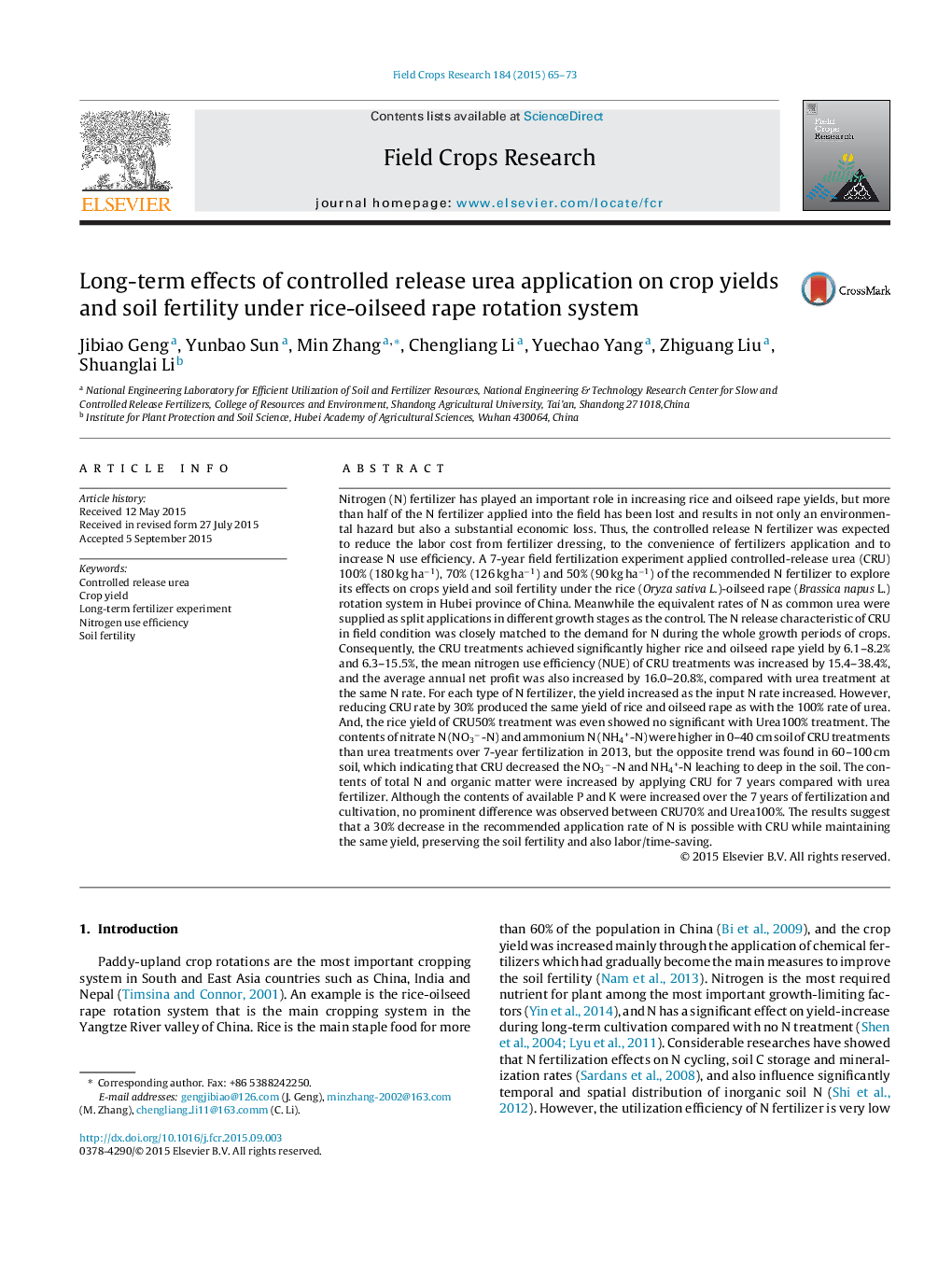| Article ID | Journal | Published Year | Pages | File Type |
|---|---|---|---|---|
| 6374636 | Field Crops Research | 2015 | 9 Pages |
Abstract
Nitrogen (N) fertilizer has played an important role in increasing rice and oilseed rape yields, but more than half of the N fertilizer applied into the field has been lost and results in not only an environmental hazard but also a substantial economic loss. Thus, the controlled release N fertilizer was expected to reduce the labor cost from fertilizer dressing, to the convenience of fertilizers application and to increase N use efficiency. A 7-year field fertilization experiment applied controlled-release urea (CRU) 100% (180 kg haâ1), 70% (126 kg haâ1) and 50% (90 kg haâ1) of the recommended N fertilizer to explore its effects on crops yield and soil fertility under the rice (Oryza sativa L.)-oilseed rape (Brassica napus L.) rotation system in Hubei province of China. Meanwhile the equivalent rates of N as common urea were supplied as split applications in different growth stages as the control. The N release characteristic of CRU in field condition was closely matched to the demand for N during the whole growth periods of crops. Consequently, the CRU treatments achieved significantly higher rice and oilseed rape yield by 6.1-8.2% and 6.3-15.5%, the mean nitrogen use efficiency (NUE) of CRU treatments was increased by 15.4-38.4%, and the average annual net profit was also increased by 16.0-20.8%, compared with urea treatment at the same N rate. For each type of N fertilizer, the yield increased as the input N rate increased. However, reducing CRU rate by 30% produced the same yield of rice and oilseed rape as with the 100% rate of urea. And, the rice yield of CRU50% treatment was even showed no significant with Urea100% treatment. The contents of nitrate N (NO3â-N) and ammonium N (NH4+-N) were higher in 0-40 cm soil of CRU treatments than urea treatments over 7-year fertilization in 2013, but the opposite trend was found in 60-100 cm soil, which indicating that CRU decreased the NO3â-N and NH4+-N leaching to deep in the soil. The contents of total N and organic matter were increased by applying CRU for 7 years compared with urea fertilizer. Although the contents of available P and K were increased over the 7 years of fertilization and cultivation, no prominent difference was observed between CRU70% and Urea100%. The results suggest that a 30% decrease in the recommended application rate of N is possible with CRU while maintaining the same yield, preserving the soil fertility and also labor/time-saving.
Keywords
Related Topics
Life Sciences
Agricultural and Biological Sciences
Agronomy and Crop Science
Authors
Jibiao Geng, Yunbao Sun, Min Zhang, Chengliang Li, Yuechao Yang, Zhiguang Liu, Shuanglai Li,
